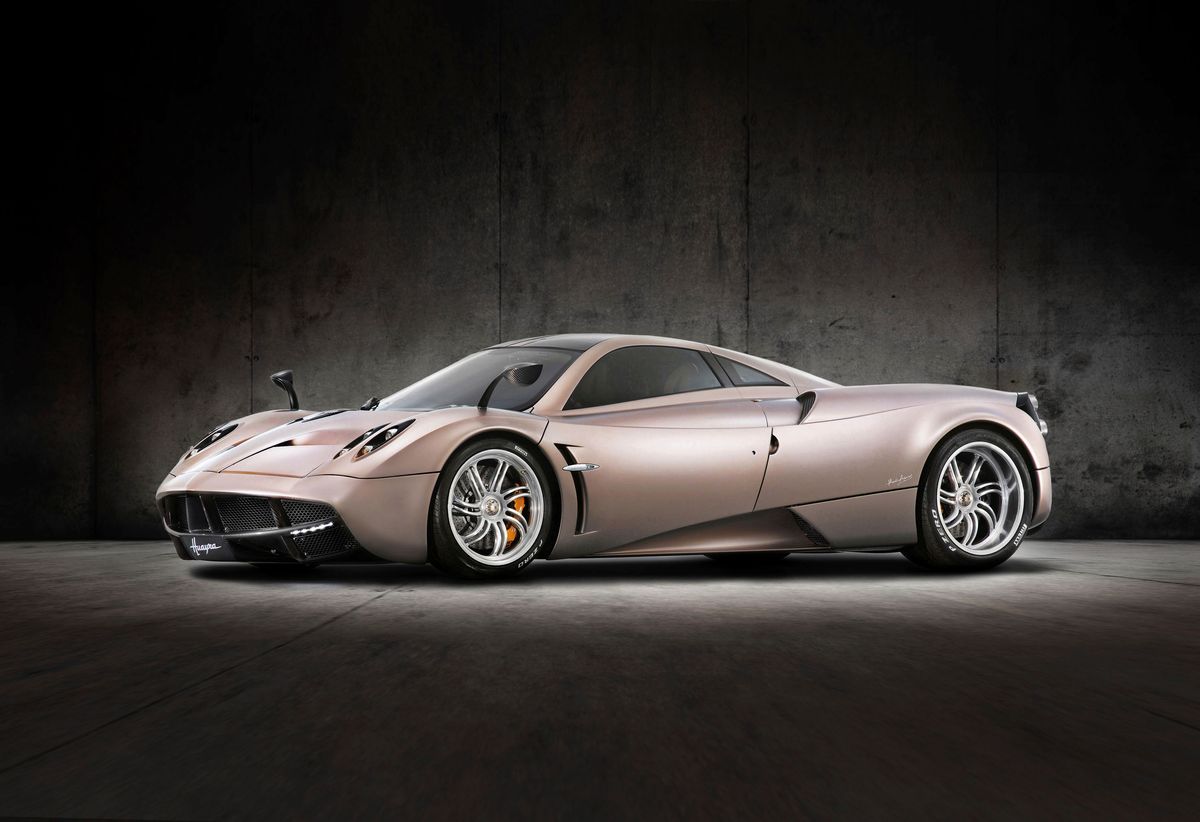2015's Top Ten Tech Cars: Pagani Huayra
A millionaire’s gull-winged dream

Video: JJ Automotive Walkarounds
Horacio Pagani is a throwback to the era of Henry J. Kaiser and Preston Tucker, when a visionary could start a car company on little more than brilliance and good connections. And like Kaiser and Tucker, the Argentina-born former Lamborghini engineer builds cars like no one else. As an object lesson, consider the Huayra (WHY-ra), a 537-kilowatt (720-horsepower) gull-winged, carbon-fiber goddess that makes many supercars seem like mass-market commoners.
The Huayra has Bugatti-like exclusivity and value: Barely 40 units a year are being built to order at a price that can top US $1.8 million. Nevertheless, and happily enough, Pagani let me test one at the Monticello Motor Club in upstate New York. Note to self: Do not run this Fabergé-rare beauty into the nearest wall.
Price: US $1.5–$1.8 million
Power train: 537-kW (720-hp) 6.0-L twin-turbo V-12
Overall fuel economy: 19.6 L/100 km (12 mpg)
With a naked, clear-coated carbon-fiber body and monocoque chassis, the Huayra weighs 1,400 kilograms (3,100 pounds). Uniquely, Pagani also weaves titanium into the carbon fiber to boost rigidity and spread kinetic energy in a crash. (And how’s this for obsessive: Every titanium bolt in the car is etched with the Pagani name.) To achieve street legality in the United States, the Huayra had to pass 47 crash tests using a pair of carbon-fiber monocoques that Pagani says remained usable despite repeated destructive tests. And the engine? It’s built by Mercedes-AMG to Pagani’s specifications, including a dizzying 1,000 newton meters (738 foot-pounds) of torque, and it’s mated to a seven-speed single-clutch automated manual transmission.
On the day of my test drive, I arrive at Monticello to find the two-tone Huayra lolling in the pit lane, drawing a crowd and looking as though it’s going 300 kilometers per hour while standing still. Exterior mirrors curl from slender stalks, like the antennae of some superpowered insect. Stepping into the car is like going back in time: The inside is a gleaming metal-and-leather cocoon that feels like the cockpit of a fantasy Howard Hughes aircraft. On the track, the car has a visceral, almost retromechanical feel. But there’s nothing old-fashioned about the acceleration, which—inspired by Pagani’s heroes, including Leonardo da Vinci—mimics the feel of a jet hurtling down the runway. Minus the liftoff, of course: Active aerodynamic flaps at all four corners rise and fall to mimic the aileron of a plane, keeping the body flat even as g-forces threaten to peel the skin off my face. It sounds like a gasping beast, its turbos huffing and chuffing with every mash of the throttle. The car rockets to 100 km/h (62 miles per hour) in about 3.2 seconds and keeps cooking to about 370 km/h (230 mph).
Standing in the pits at Monticello, Pagani tells me that, contrary to conventional wisdom, it is possible to build a business by making cars that cost as much as a three-bedroom co-op in Manhattan.
“If it’s your passion and your dream, you will achieve your goal,” he says.